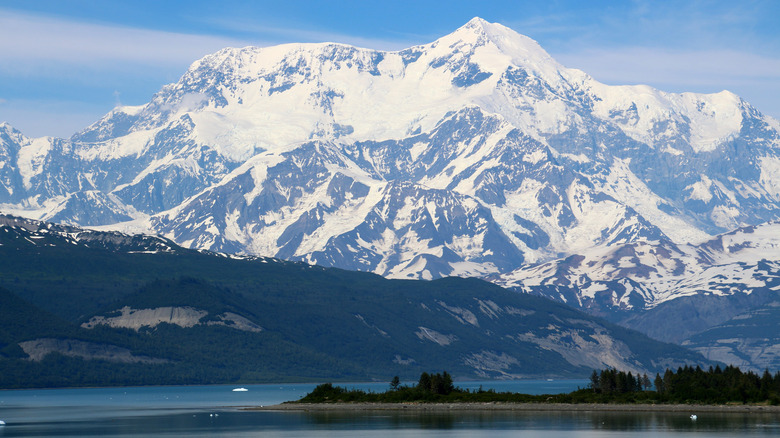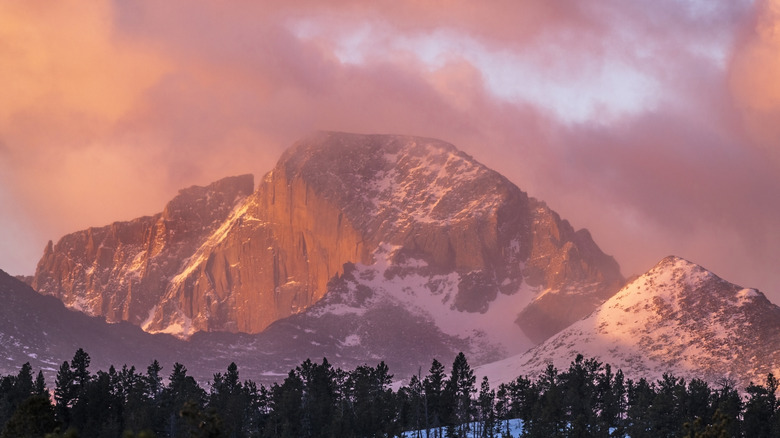Visit These US National Parks To Help Prepare You For Hiking Mt. Everest
We may receive a commission on purchases made from links.
For anyone who takes an interest in climbing Mt. Everest, the tallest mountain on Earth, there is a tremendous amount of planning, preparation, and training before the actual Everest expedition takes place. This must be factored in when considering how long it takes to hike Everest. Actually, the training typically takes longer than they actually climb. Part of that training regiment involves climbing other mountains. While several of the suggested training peaks are scattered around the globe, there are a number of U.S. national parks you can visit to help get you ready for hiking Mt. Everest.
One of these, Denali, is actually on virtually every list of recommended climbs to prepare for Everest. Many other U.S. national parks offer climbs that can help climbers prepare for Everest in various ways, such as acclimatizing to climate and elevation, as well as the technical skills needed to climb to the highest point on Earth. So, while there is only one Mt. Everest, there are several mountains within our very own national parks that can help you prep without having to travel around the globe to train.
Making a list of national parks with viable training climbs should be part of your planning and preparation for your Everest adventure. However, although in a sport such as mountaineering it should be assumed, it is important to understand these are among the most dangerous national parks and climbs you can attempt in the U.S. So, it is imperative to be adequately experienced and supplied with the proper climbing equipment, an emergency survival kit, altimeter, compass, GPS unit, and personal locator beacon.
Wrangell-St. Elias National Park and Preserve, Alaska
Spanning just over 13 million acres, Alaska's Wrangell-St. Elias National Park and Preserve is the largest national park in the United States. It is also home to the second highest mountain in America — the 18,000-foot tall Mt. Saint Elias. However, that is hardly the only high peak within this massive national park. In fact, including Mount St. Elias, Wrangell-St. Elias National Park is home to almost half — 7 of 20 to be exact — of the tallest summits in North America. This makes it an ideal training destination for those hoping to climb Mt. Everest.
Before heading to Wrangell-St. Elias National Park, climbers need to be aware that above 10,000 feet, these mountains are glaciated. While this provides an opportunity to hone skills needed for climbing Everest, they also present a considerable hazard. If you don't yet have the technical abilities to attempt this type of climb on your own, there are mountaineering guides who operate within the park. Additionally, permitting is required and given that this mountain range is right against the Canadian border, there may be other approval conditions required depending on your route.
Denali National Park and Preserve, Alaska
Mt. Denali, which was known as Mt. McKinley until 2016, is the highest peak in North America. At 20,310 feet, Denali is still substantially lower than Everest. However, it is considered one of the world's most treacherous mountains to climb, requiring technical skill and peak conditioning to successfully complete.
According to Ian Taylor Trekking, climbing Delani as part of your Mt. Everest preparation is a great way to learn about equipment management and transporting equipment over rugged terrain in inclement weather. The climb also helps those who aspire to ascend Everest an opportunity to adjust to high elevation, sub-freezing temperatures, and other hazardous conditions.
Mt. Denali is located within six million-acre Denali National Park & Preserve in Alaska. The park is also home to Mt. Foraker, the third highest peak in the U.S., which is another good training opportunity for a Mt. Everest attempt. Before attempting to climb either mountain, the National Park Service recommends reviewing the Mountaineering in Denali information page. Additionally, you must apply for a special use permit and register at least 60 days prior to your trip. You must also attend an in-person climber orientation. These sessions are conducted at the Walter Harper Talkeetna Ranger Station in the national park.
Sequoia National Park and Inyo National Forest, California
Straddling the Sierra Nevada Mountains in California, Sequoia National Park is best known as a hiking and bear-watching destination. However, it is also home to the tallest mountain in America's Lower 48. Well, it has shared ownership with Inyo National Forest. Climbers have the option of accessing Mt. Whitney from either location.
Reaching a height of 14,505 feet, Mt. Whitney is the 11th tallest peak in the U.S. Although it is only half the height of Everest, it nonetheless offers technical mountaineering experience necessary for an ascent of the world's tallest mountain. It is actually very good training for the Everest Base Camp Climb, which will be the inaugural part of your Everest experience.
Before heading out to climb Mt. Whitney, you must first determine which route you will take. The most common route is known as the Whitney Portal. It is on the east side of the mountain in the Inyo National Forest. Part of the reason this path is the most popular is because at 10.7 miles, it is the shortest and easiest. There are longer trails within Sequoia National Park on the west side of the mountain. Regardless of which trail you take, you will be required to get a permit from whichever facility you are leaving from.
Mount Rainier National Park, Washington
The namesake peak of Mount Rainier National Park hits an elevation of 14,411 feet, making it the 17th highest mountain in the United States. While that may not seem all that impressive, it is worth noting it is less than 160 feet from cracking the top 10 tallest mountains in America. Mount Rainier is the highest point in the Cascade Mountain Range, as well as the tallest mountain in the state of Washington. It also holds the distinction of being the highest mountain in the Pacific Northwest.
Given the number of communities and amount of lodging and amenities within close proximity to Mount Rainier National Park, it is one of the easiest to reach and most convenient of the national parks that can help prepare you for climbing Mt. Everest. However, convenience isn't the only reason to visit Mount Rainier National Park during your training period. Mount Rainier is covered with deep snow for much of the year, which provides an excellent opportunity to learn how to deal with the challenges these conditions present.
Within Mount Rainier National Park are four trailheads that give access to Mount Rainier. Nearly two dozen routes branch off from these trailheads. Regardless of which trailhead or route you take, you will need to pay an annual climbing fee online before heading to the park. Once at the park, you will also need to obtain a climbing permit for your party.
Rocky Mountain National Park, Colorado
Covering just over a quarter-million acres, Rocky Mountain National Park is far smaller than most of the other parks on this list. However, it has long been a thrill-seeking destination for a variety of outdoor enthusiasts, including hikers and climbers. This is largely due to the wide variety of hiking opportunities available within the park. Given that it offers everything from a low-grade hiking trail to the 14,259-foot tall Longs Peak, it literally has options for all ability levels and is an excellent training area to build a variety of skills that can be applied to more formidable climbs.
Rocky Mountain National Park is an ideal area to build your camping skills, which are an integral part of your preparation for climbing Everest. Less technical hikes and climbs will also allow you to get used to various pieces of equipment and build basic mountaineering skills. However, ascending Longs Peak is much more technical. Climbers need to be experienced and adept at a variety of mountaineering skills, including scrambling steep inclines and navigating narrow ledges. Given the often unstable weather in the Rocky Mountains, it is also important to check the forecast diligently before and during your climb.





